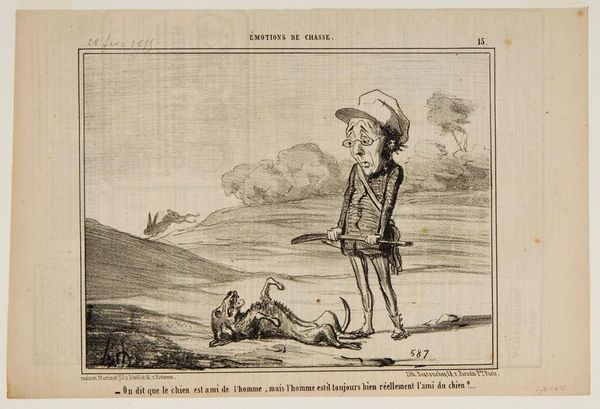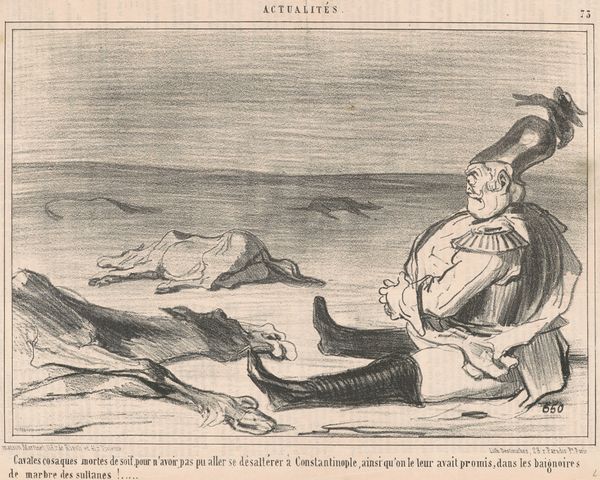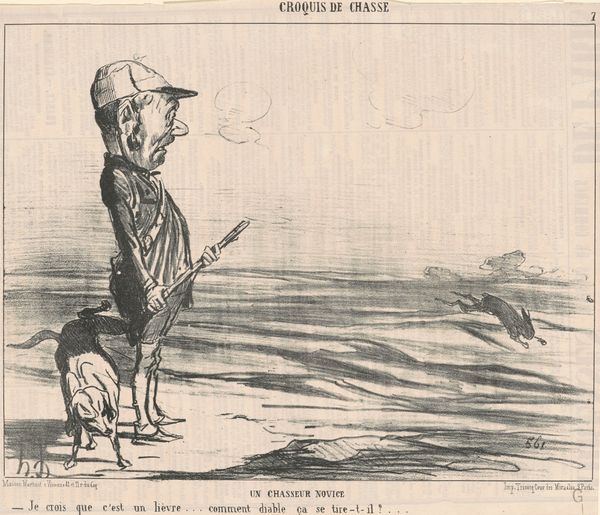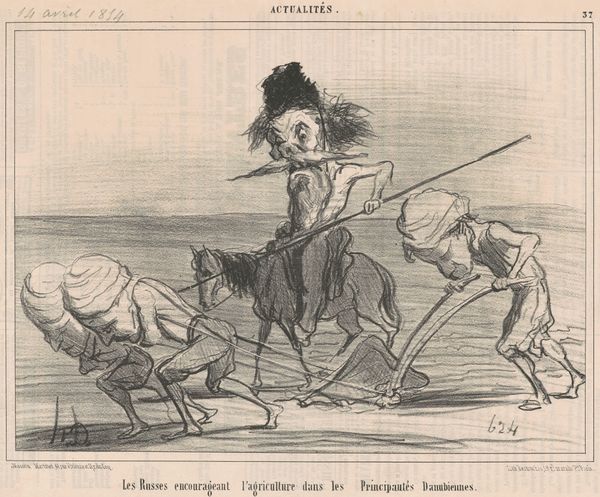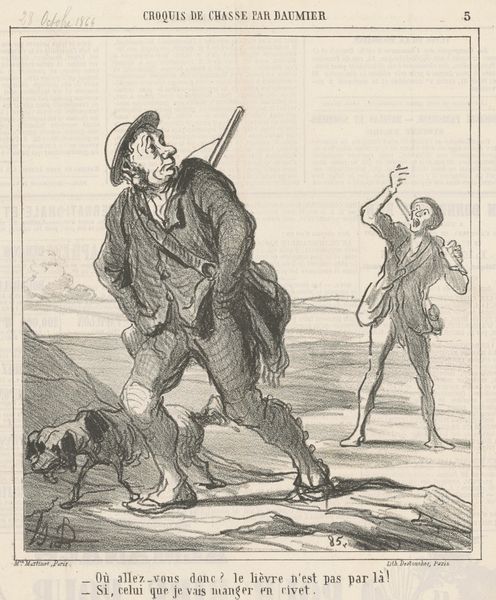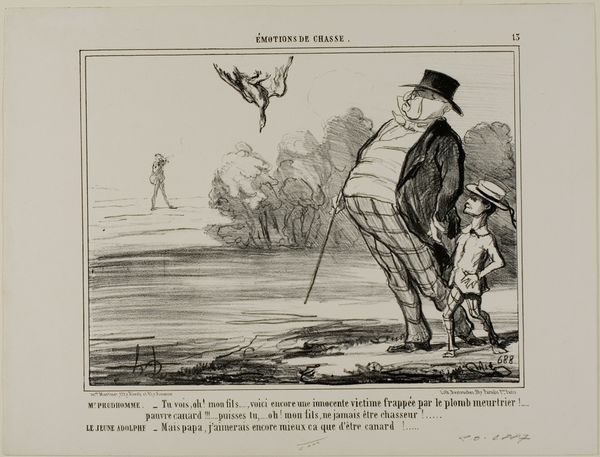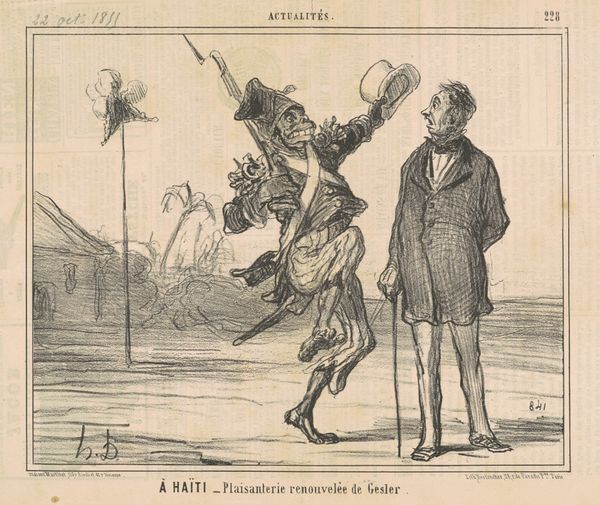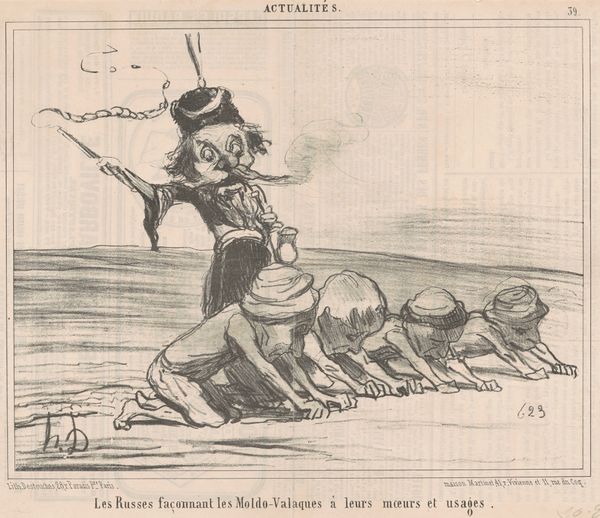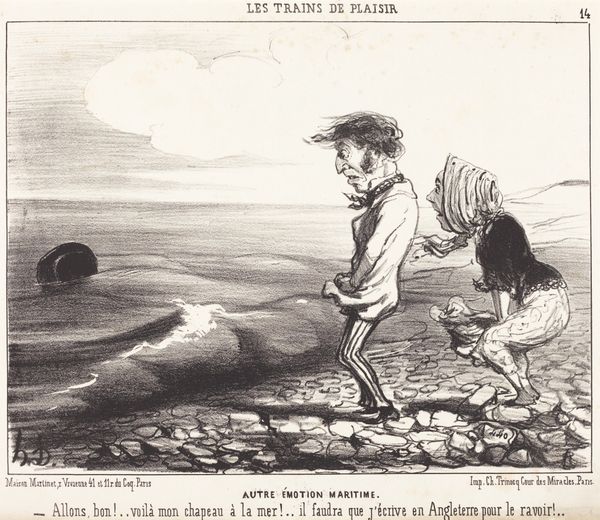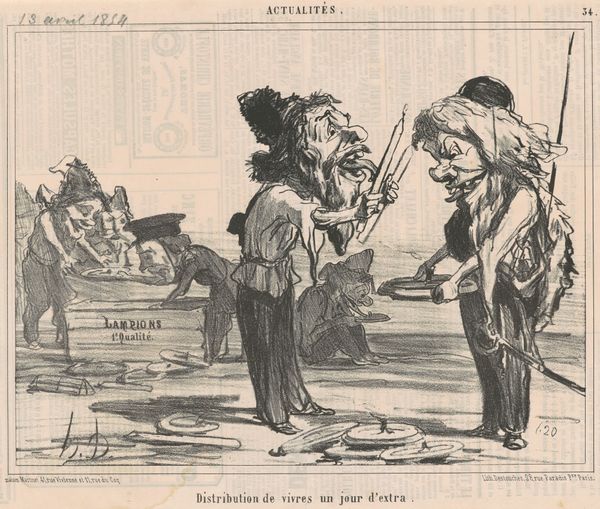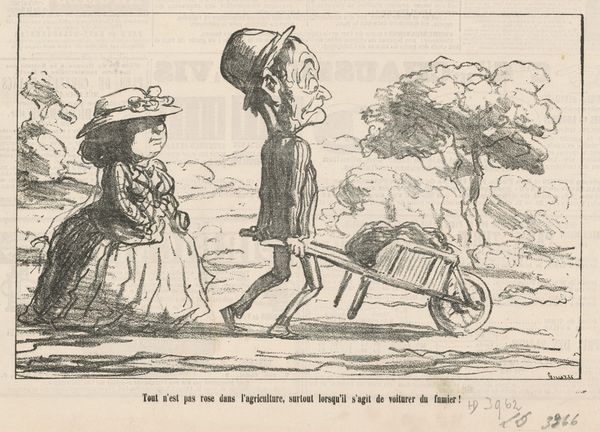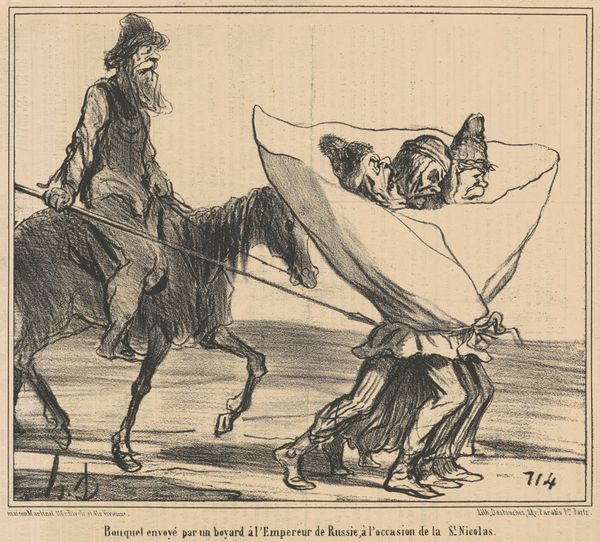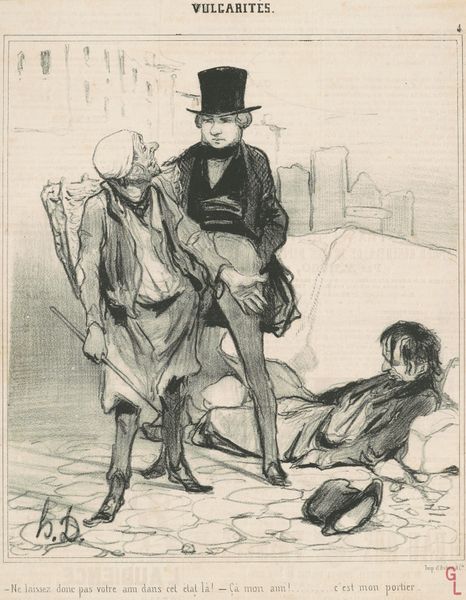
Copyright: National Gallery of Art: CC0 1.0
Curator: Here we have Honoré Daumier’s 1855 lithograph, "On dit que le chien est ami de l'homme...". The title translates to "They say the dog is man’s best friend...". Editor: It strikes me immediately as darkly comical. There's a palpable sense of failure in this scene. The stark monochrome and rough strokes add to that feeling of deflation. Curator: Daumier, a master of social commentary, was renowned for his lithographs published in periodicals like Le Charivari. These works served as a visual chronicle of 19th-century French society. Editor: You see that acutely in the figure of the hunter, dressed for sport but clearly inept, while the dog rolls on its back—possibly feigning death, possibly just indifferent. There is material waste in these failed ventures. What would be consumed, now will not. Curator: Absolutely. Daumier cleverly utilizes caricature to critique the bourgeoisie's aspirations. The exaggerated features of the hunter, the thin legs, and overly large head, expose the ridiculousness of his attempt at leisure and status. Editor: The choice of lithography as a medium is essential. It allowed for mass production, making his social critiques accessible to a wide audience. The material properties of the lithographic stone and the greasy crayon facilitated a rapid production workflow suitable for newspapers. Curator: And that speed meant that the work would remain pertinent, contributing to the debates of the moment. We see his skepticism toward traditional power structures. In this period, access to hunting was tightly bound to social status and economic means. Daumier highlights its performative aspect. Editor: There's a direct challenge to the notion of work and reward, also, the traditional hunting scenes where humans and animals cooperate in a kind of productive harmony are upset here. Instead, the land remains unchanged; the social order unaltered. Curator: It makes you consider the political weight that a simple, reproduced print can possess. Editor: And how the social commentary becomes deeply entwined with the materiality of printmaking and distribution of art. Curator: A final sardonic, lasting observation on human-animal relationships and class pretension. Editor: Indeed, a wryly rendered reminder of the gap between idealized social roles and material realities.
Comments
No comments
Be the first to comment and join the conversation on the ultimate creative platform.
